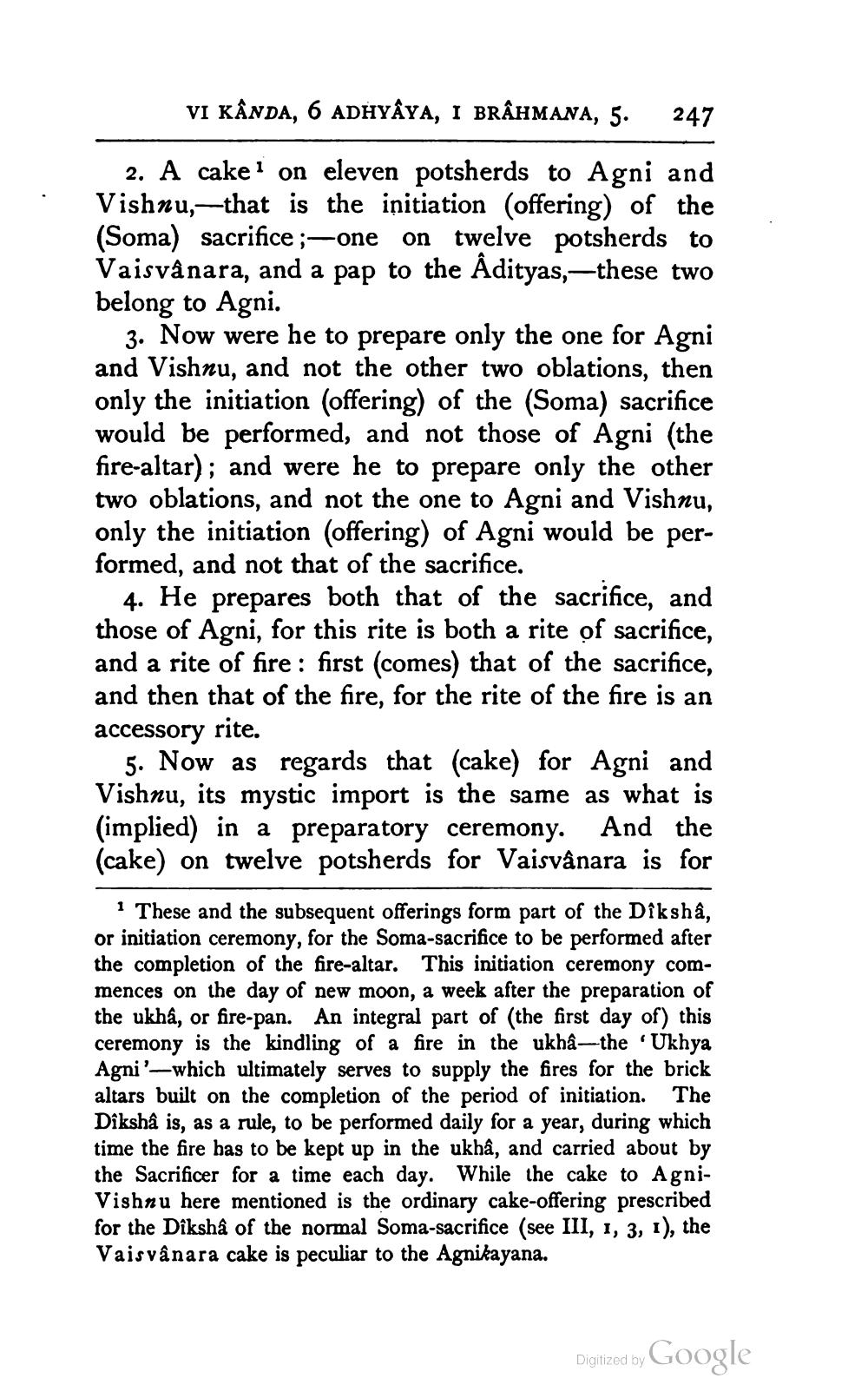________________
VI KÂNDA, 6 ADHYÂYA, I BRÂHMANA, 5.
247
2. A cake i on eleven potsherds to Agni and Vishnu,—that is the initiation (offering) of the (Soma) sacrifice ;-one on twelve potsherds to Vaisvânara, and a pap to the Adityas,—these two belong to Agni.
3. Now were he to prepare only the one for Agni and Vishnu, and not the other two oblations, then only the initiation (offering) of the (Soma) sacrifice would be performed, and not those of Agni (the fire-altar); and were he to prepare only the other two oblations, and not the one to Agni and Vishnu, only the initiation (offering) of Agni would be performed, and not that of the sacrifice.
4. He prepares both that of the sacrifice, and those of Agni, for this rite is both a rite of sacrifice, and a rite of fire : first (comes) that of the sacrifice, and then that of the fire, for the rite of the fire is an accessory rite.
5. Now as regards that (cake) for Agni and Vishnu, its mystic import is the same as what is (implied) in a preparatory ceremony. And the (cake) on twelve potsherds for Vaisvânara is for
1 These and the subsequent offerings form part of the Dikshâ, or initiation ceremony, for the Soma-sacrifice to be performed after the completion of the fire-altar. This initiation ceremony commences on the day of new moon, a week after the preparation of the ukha, or fire-pan. An integral part of the first day of) this ceremony is the kindling of a fire in the ukhâ—the Ukhya Agni'-which ultimately serves to supply the fires for the brick altars built on the completion of the period of initiation. The Dikshâ is, as a rule, to be performed daily for a year, during which time the fire has to be kept up in the ukhâ, and carried about by the Sacrificer for a time each day. While the cake to AgniVishnu here mentioned is the ordinary cake-offering prescribed for the Diksha of the normal Soma-sacrifice (see III, 1, 3, 1), the Vaisvânara cake is peculiar to the Agnikayana.
Digitized by Google




